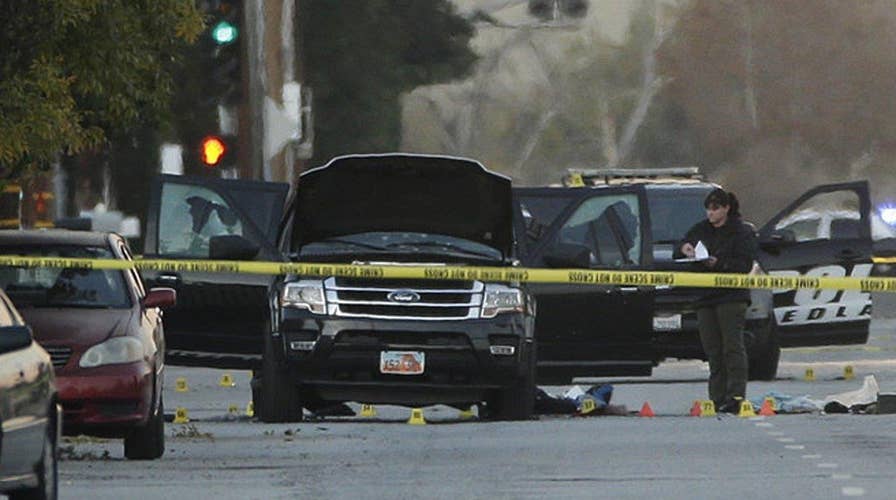FBI searching for missing hard drive in San Bernardino probe
Adam Housley reports from Los Angeles
FBI investigators have been unable to find a missing hard drive or crack the encrypted codes of the jihadist couple behind last month's terror attacks in San Bernardino, Calif., sources told Fox News.
The two cell phones used by homegrown terrorist Syed Farook and his foreign bride Tashfeen Malik before the Dec. 2 attack, which left 14 dead and 22 injured, are highly encrypted, Assistant Director in Charge of the Los Angeles Field Office David Bowdich told Fox News in an exclusive interview, and the pair also attempted to destroy the devices.
Information on the phones could contain the key to exposing the radical Muslim couple's potential terrorist network connections and other illicit activities.
“As to those devices, obviously we’ve said from day one, the digital footprint is incredibly important for us to hopefully learn any contacts, any context, and ultimately any intent on their part,” Bowdich said. “I think that’s very, very important.”
The phones and a still-missing computer hard drive could contain key communications, and fill in an 18-minute gap of time after the attack and before the shootout that killed the couple.
“I’m certainly not looking past the possibility of a potential secondary attack based on the amount of ammunition they had. Based on all the seeming preparations they had made. Based on all the pipes they had inside the house that could easily have been made into pipe bombs,” said Bowdich.
The FBI has hired a private contractor to help crack the encryption codes. But tech experts told Fox News the FBI and the private contractors they’ve hired face major challenges.
“Depending on the type of encryption used by the terrorists the FBI may have a very difficult, if not impossible task, said Mark Turnage, CEO of OWL Cybersecurity, a provider of dark net threat intelligence and cybersecurity services. “There are commercially available encryption programs, which are all but unbreakable.”
Some tech experts maintain the FBI and some politicians and presidential candidates are using the San Bernardino case to justify their call for Apple and Google to give law enforcement a backdoor to their iPhones/Android devices, but tech experts argue against the idea. They say other commercially available encryption programs exist from companies outside the U.S., and terrorists could easily use them if Apple and Google agreed.
“I’m not a fan of this (backdoors in software) since it increases the complexity and adds unintended vulnerabilities to everyone’s mobile devices,” said Ron Gula, CEO of one of the leading global providers of next-generation cyber security software, Tenable Network Security.
“There are many ways for terrorists to hide their activities if they choose to do so, but not all do. Some groups have very poor operation security,” Gula said.
But he warns that drawing public attention to what can frustrate a government investigation sends a message to future terrorists on how to stump investigations.
Terrorists can already access a number of technical manuals on how to encrypt their data and communications, according to Veryan Khan, Editorial Director of its Terrorism Research & Analysis Consortium (TRAC).
That includes a 34-page guide to operational security highlighted in a recent Wired magazine article that ISIS members use.
According to Wired, Aaron Brantly and other researchers with the Combating Terrorism Center at West Point’s military academy “uncovered the manual and other related documents from ISIS forums, social accounts and chat rooms.”


